-
 Bitcoin
Bitcoin $117400
1.88% -
 Ethereum
Ethereum $3867
5.29% -
 XRP
XRP $3.081
2.58% -
 Tether USDt
Tether USDt $1.000
0.03% -
 BNB
BNB $779.7
0.92% -
 Solana
Solana $171.8
2.11% -
 USDC
USDC $0.9999
0.01% -
 Dogecoin
Dogecoin $0.2172
5.80% -
 TRON
TRON $0.3413
1.41% -
 Cardano
Cardano $0.7641
3.06% -
 Hyperliquid
Hyperliquid $39.69
3.62% -
 Sui
Sui $3.731
6.73% -
 Stellar
Stellar $0.4125
3.55% -
 Chainlink
Chainlink $18.23
8.86% -
 Bitcoin Cash
Bitcoin Cash $579.5
1.41% -
 Hedera
Hedera $0.2538
4.02% -
 Ethena USDe
Ethena USDe $1.001
0.00% -
 Avalanche
Avalanche $22.81
2.82% -
 Litecoin
Litecoin $121.7
1.10% -
 UNUS SED LEO
UNUS SED LEO $8.962
-0.33% -
 Toncoin
Toncoin $3.324
2.94% -
 Shiba Inu
Shiba Inu $0.00001263
2.30% -
 Uniswap
Uniswap $10.24
4.95% -
 Polkadot
Polkadot $3.780
3.09% -
 Dai
Dai $1.000
0.03% -
 Bitget Token
Bitget Token $4.432
1.64% -
 Cronos
Cronos $0.1493
3.87% -
 Monero
Monero $256.7
-9.05% -
 Pepe
Pepe $0.00001092
3.99% -
 Aave
Aave $279.0
6.11%
What is the mark price of KuCoin contract? What is the difference with the latest price?
The mark price on KuCoin, calculated using index and fair prices, provides a stable valuation of futures contracts, reducing liquidation risks from market volatility.
May 05, 2025 at 03:43 pm
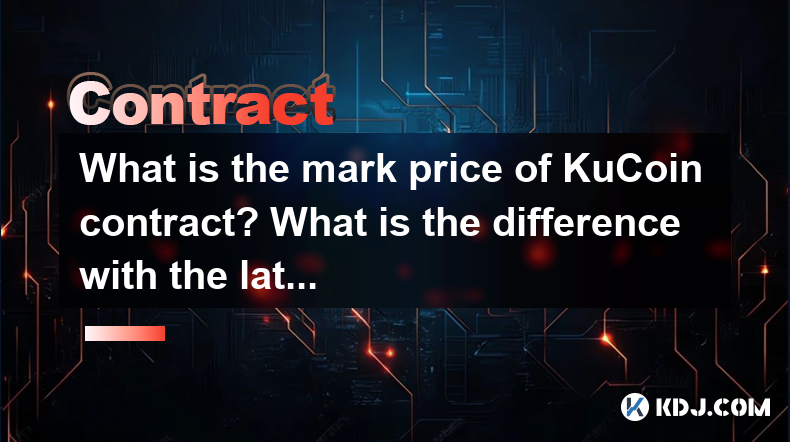
The mark price of a KuCoin contract is a crucial concept in the world of cryptocurrency futures trading. It is designed to provide a more stable and fair valuation of a futures contract, mitigating the risks associated with market manipulation and sudden price fluctuations. In this article, we will explore what the mark price of a KuCoin contract is, how it differs from the latest price, and why it is important for traders.
Understanding the Mark Price of KuCoin Contract
The mark price of a KuCoin contract is an estimate of the fair value of the futures contract at any given moment. It is calculated using a combination of the latest price of the underlying asset and the funding rate. The mark price helps to prevent liquidations caused by short-term market volatility and ensures that traders are not unfairly liquidated due to price manipulation.
To calculate the mark price, KuCoin uses a formula that takes into account the index price and the fair price. The index price is the average of the prices from multiple spot markets, providing a more reliable reference for the value of the underlying asset. The fair price, on the other hand, is derived from the perpetual contract's funding rate and is designed to keep the perpetual contract price aligned with the spot price over time.
Difference Between Mark Price and Latest Price
The latest price of a KuCoin contract refers to the most recent trading price of the futures contract. This price can be highly volatile and subject to sudden changes due to market conditions, trading volume, and other factors. In contrast, the mark price is a more stable and less susceptible to manipulation, as it is calculated based on a broader set of data.
The primary difference between the mark price and the latest price lies in their purpose and calculation method. The latest price reflects the immediate market sentiment and can be influenced by short-term trading activities. On the other hand, the mark price aims to provide a more accurate and fair valuation of the futures contract, reducing the impact of temporary market fluctuations and potential manipulation.
Importance of Mark Price in Trading
The mark price plays a critical role in the trading of KuCoin contracts. It is used to determine the maintenance margin and the liquidation price of a position. By using the mark price instead of the latest price, KuCoin helps to protect traders from being liquidated due to sudden price spikes or drops that do not reflect the true value of the underlying asset.
For example, if the latest price of a contract suddenly drops due to a large sell order, a trader's position might be at risk of liquidation if the latest price were used. However, the mark price, which is less affected by such short-term movements, would provide a more stable reference point, reducing the likelihood of unnecessary liquidations.
How KuCoin Calculates the Mark Price
KuCoin uses a specific formula to calculate the mark price of its contracts. The formula is as follows:
Mark Price = (Index Price + Fair Price) / 2- Index Price: This is the average price of the underlying asset across multiple spot markets. It is designed to provide a more reliable and less manipulable reference for the asset's value.
- Fair Price: This is calculated based on the funding rate of the perpetual contract. The funding rate is a mechanism that ensures the perpetual contract price stays close to the spot price over time.
By averaging the index price and the fair price, KuCoin aims to create a mark price that is both fair and resistant to manipulation.
Practical Example of Mark Price vs. Latest Price
To illustrate the difference between the mark price and the latest price, consider the following scenario:
- Latest Price: The most recent trading price of a Bitcoin futures contract on KuCoin is $30,000.
- Index Price: The average price of Bitcoin across multiple spot markets is $29,950.
- Fair Price: Based on the current funding rate, the fair price of the contract is calculated to be $29,970.
Using the mark price formula:
Mark Price = (Index Price + Fair Price) / 2
Mark Price = ($29,950 + $29,970) / 2
Mark Price = $29,960In this example, the mark price of $29,960 is slightly lower than the latest price of $30,000. This difference reflects the stability and fairness of the mark price, which is less influenced by short-term market movements.
Using Mark Price in Trading Strategies
Traders can leverage the mark price to develop more robust trading strategies. Since the mark price is less volatile than the latest price, it can be used as a more reliable indicator for setting stop-loss orders and take-profit levels. By basing these orders on the mark price, traders can reduce the risk of being stopped out due to temporary market fluctuations.
Here are some steps to incorporate the mark price into your trading strategy:
- Monitor the Mark Price: Keep an eye on the mark price alongside the latest price to understand the true value of your position.
- Set Stop-Loss Orders: Use the mark price to set stop-loss orders, ensuring that your position is protected from sudden market movements that do not reflect the underlying asset's value.
- Adjust Take-Profit Levels: Base your take-profit levels on the mark price to capture profits more effectively and avoid premature exits due to short-term volatility.
- Evaluate Liquidation Risk: Assess the liquidation risk of your position using the mark price, as it provides a more accurate indication of when your position might be liquidated.
By integrating the mark price into your trading strategy, you can make more informed decisions and potentially improve your overall trading performance.
Frequently Asked Questions
Q: How often is the mark price updated on KuCoin?
A: The mark price on KuCoin is updated in real-time, reflecting the latest data from the index price and the fair price calculations.
Q: Can the mark price be manipulated?
A: While the mark price is designed to be less susceptible to manipulation than the latest price, it is not entirely immune. However, the use of the index price and fair price helps to mitigate the risk of manipulation.
Q: Why is the mark price important for margin trading?
A: The mark price is crucial for margin trading because it determines the maintenance margin and the liquidation price of a position. Using the mark price helps to protect traders from being liquidated due to short-term market volatility.
Q: How does the funding rate affect the mark price?
A: The funding rate influences the fair price component of the mark price calculation. A positive funding rate indicates that the perpetual contract price is higher than the spot price, while a negative funding rate suggests the opposite. The funding rate helps to keep the perpetual contract price aligned with the spot price over time.
Disclaimer:info@kdj.com
The information provided is not trading advice. kdj.com does not assume any responsibility for any investments made based on the information provided in this article. Cryptocurrencies are highly volatile and it is highly recommended that you invest with caution after thorough research!
If you believe that the content used on this website infringes your copyright, please contact us immediately (info@kdj.com) and we will delete it promptly.
- Pi Coin's dApp and AI Potential: Building a Decentralized Future
- 2025-08-08 02:30:12
- Ruvi AI Takes the Lead: Outshining Dogecoin on CoinMarketCap
- 2025-08-08 02:50:12
- Cryptos Under $1: Is Ripple Still the King?
- 2025-08-08 03:50:12
- Cold Wallet, Bonk Price, ICP Price: Navigating the Crypto Landscape in 2025
- 2025-08-08 03:56:12
- Memecoins, Low-Cap Gems, and the Hunt for 10,000x Gains: What's Next?
- 2025-08-08 02:50:12
- Bitcoin, Greenidge, and Liquidity: Navigating the Crypto Currents in NYC
- 2025-08-08 02:30:12
Related knowledge
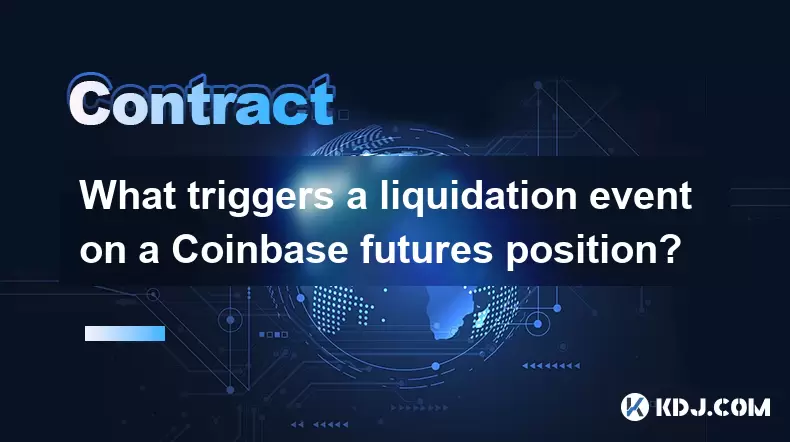
What triggers a liquidation event on a Coinbase futures position?
Aug 08,2025 at 01:15am
Understanding Futures Contracts on CoinbaseFutures contracts on Coinbase allow traders to speculate on the future price of a cryptocurrency, such as B...
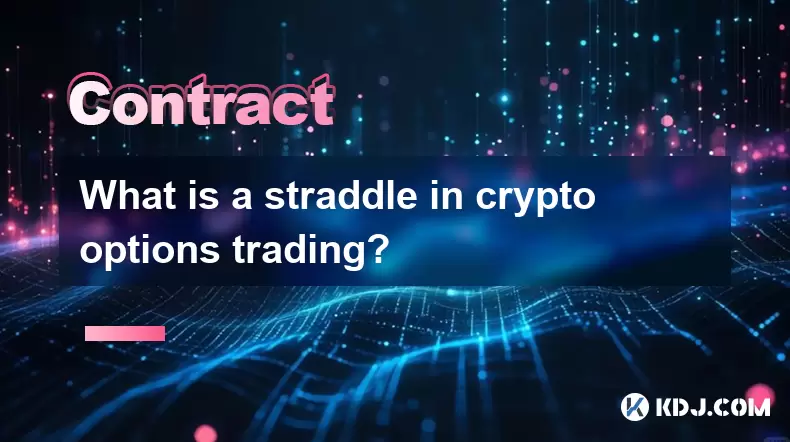
What is a straddle in crypto options trading?
Aug 07,2025 at 11:15pm
Understanding the Basics of a Straddle in Crypto OptionsA straddle is an options trading strategy used when a trader expects significant price movemen...
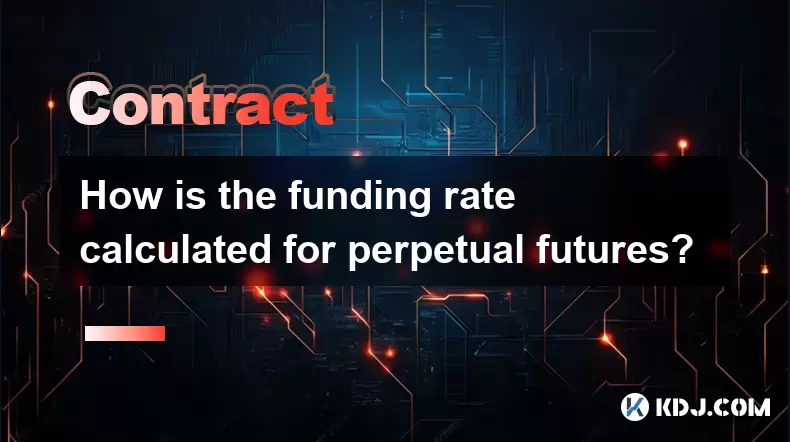
How is the funding rate calculated for perpetual futures?
Aug 07,2025 at 11:36pm
Understanding the Basics of Perpetual FuturesPerpetual futures are a type of derivative contract that does not have an expiration date, allowing trade...

What programming languages are used for smart contracts?
Aug 07,2025 at 06:07pm
Understanding Smart Contracts and Their Execution EnvironmentSmart contracts are self-executing programs deployed on blockchain networks that automati...
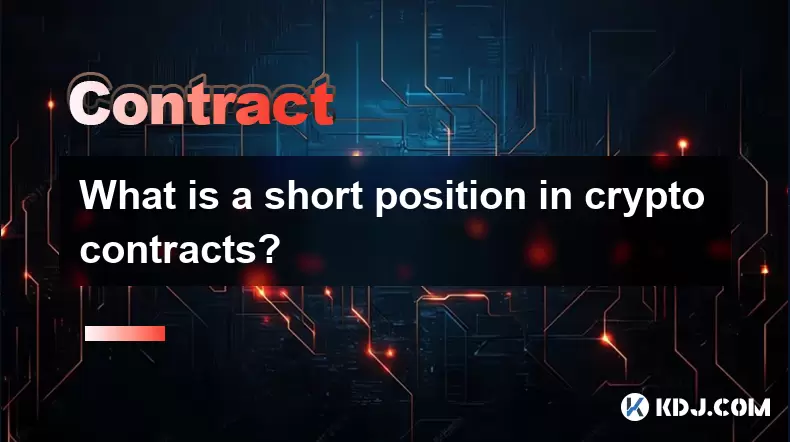
What is a short position in crypto contracts?
Aug 07,2025 at 11:42pm
Understanding the Concept of a Short Position in Crypto ContractsA short position in crypto contracts refers to a trading strategy where a trader prof...
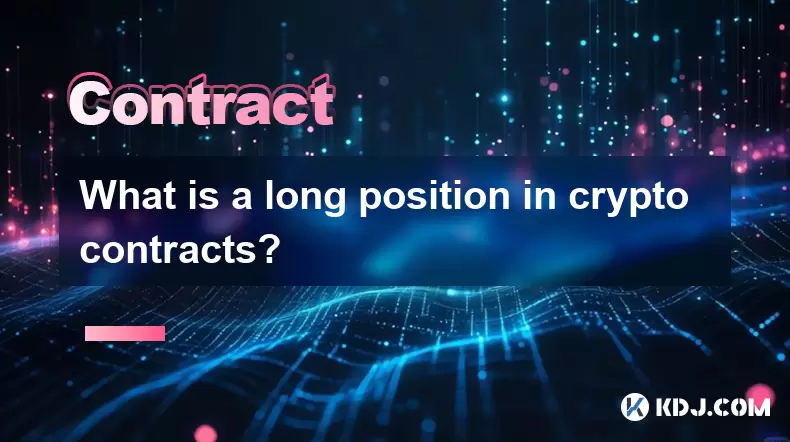
What is a long position in crypto contracts?
Aug 07,2025 at 06:29pm
Understanding the Concept of a Long Position in Crypto ContractsA long position in crypto contracts refers to a trading strategy where a trader buys a...

What triggers a liquidation event on a Coinbase futures position?
Aug 08,2025 at 01:15am
Understanding Futures Contracts on CoinbaseFutures contracts on Coinbase allow traders to speculate on the future price of a cryptocurrency, such as B...

What is a straddle in crypto options trading?
Aug 07,2025 at 11:15pm
Understanding the Basics of a Straddle in Crypto OptionsA straddle is an options trading strategy used when a trader expects significant price movemen...

How is the funding rate calculated for perpetual futures?
Aug 07,2025 at 11:36pm
Understanding the Basics of Perpetual FuturesPerpetual futures are a type of derivative contract that does not have an expiration date, allowing trade...

What programming languages are used for smart contracts?
Aug 07,2025 at 06:07pm
Understanding Smart Contracts and Their Execution EnvironmentSmart contracts are self-executing programs deployed on blockchain networks that automati...

What is a short position in crypto contracts?
Aug 07,2025 at 11:42pm
Understanding the Concept of a Short Position in Crypto ContractsA short position in crypto contracts refers to a trading strategy where a trader prof...

What is a long position in crypto contracts?
Aug 07,2025 at 06:29pm
Understanding the Concept of a Long Position in Crypto ContractsA long position in crypto contracts refers to a trading strategy where a trader buys a...
See all articles

























































































